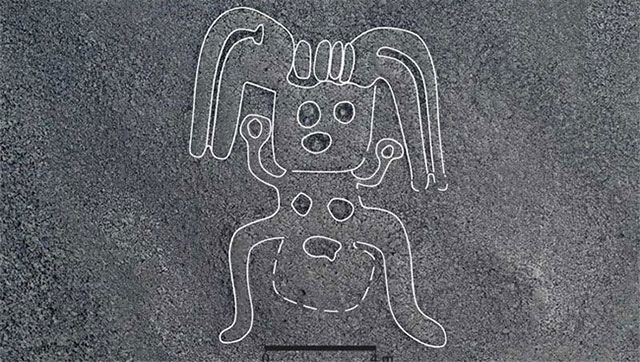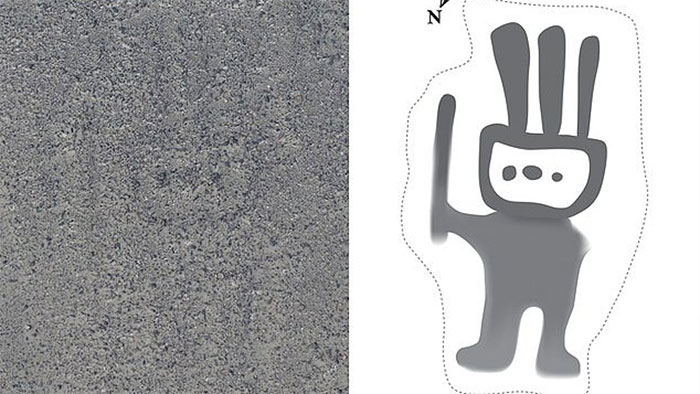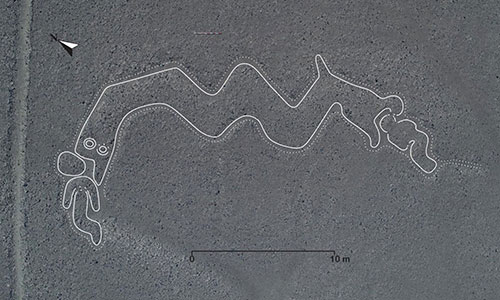AI discovered mysterious patterns in the desert
Researchers from Yamagata University, Japan announced the discovery of 142 new giant drawings on the Nazca plateau.

One of the newly discovered drawings on the Peruvian desert.(Photo: Yamagata University).
Images of the Nazca plateau, or geoglyph , were first known in the 1920s when commercial aircraft flew over an arid desert stretching 85 km in southern Peru. They were created during the Nazca period, between 200 BC and 600 AD, and are considered one of the largest archeological mysteries in the world.
Of the 142 new geoglyphs, one case was discovered using artificial intelligence (AI) technology and the Watson supercomputer of technology giant IBM. The figure depicts a person holding a sword or a cane high, researchers from Yamagata University said.

The pattern was discovered using AI and the Waston supercomputer.(Photo: Yamagata University).
Other notable geoglyphs include a giant two-headed snake about to swallow two people, a depicting bird, fish, or a strange-shaped dancing figure. The lines were carved deep into the earth, dating from about the middle of 100 BC to 300.

Geoglyph describes the bipedal snake about to swallow its body.(Photo: Yamagata University).
Archaeologists have so far no clear explanation of the methods of construction and the motives for the Nazca people to create these mysterious drawings. Some theories suggest that they are related to religious activity, astronomy, or even made by aliens. The figures on the Nazca plateau were recognized by UNESCO as a World Heritage Site in 1994.
- Decode the mysterious symbol in the Gobi desert, China
- Fishermen catch big fish with mysterious patterns on fish
- Uncover mysterious figures in China
- Mysterious circle between desert like human skin cells?
- 'New weapon' to decode DNA patterns
- Mysterious lake in the desert
- Detecting Chinese secret works
- Appeared glaciers flow between the desert, the end of the world coming?
- China built a mysterious building in the desert
- Mysterious desert in Mexico
- Decipher the mysterious sign in the Egyptian desert
- Strange drawings on the desert
 'Fine laughs' - Scary and painful torture in ancient times
'Fine laughs' - Scary and painful torture in ancient times The sequence of numbers 142857 of the Egyptian pyramids is known as the strangest number in the world - Why?
The sequence of numbers 142857 of the Egyptian pyramids is known as the strangest number in the world - Why? Miracle behind the world's largest stone Buddha statue
Miracle behind the world's largest stone Buddha statue What is alum?
What is alum?